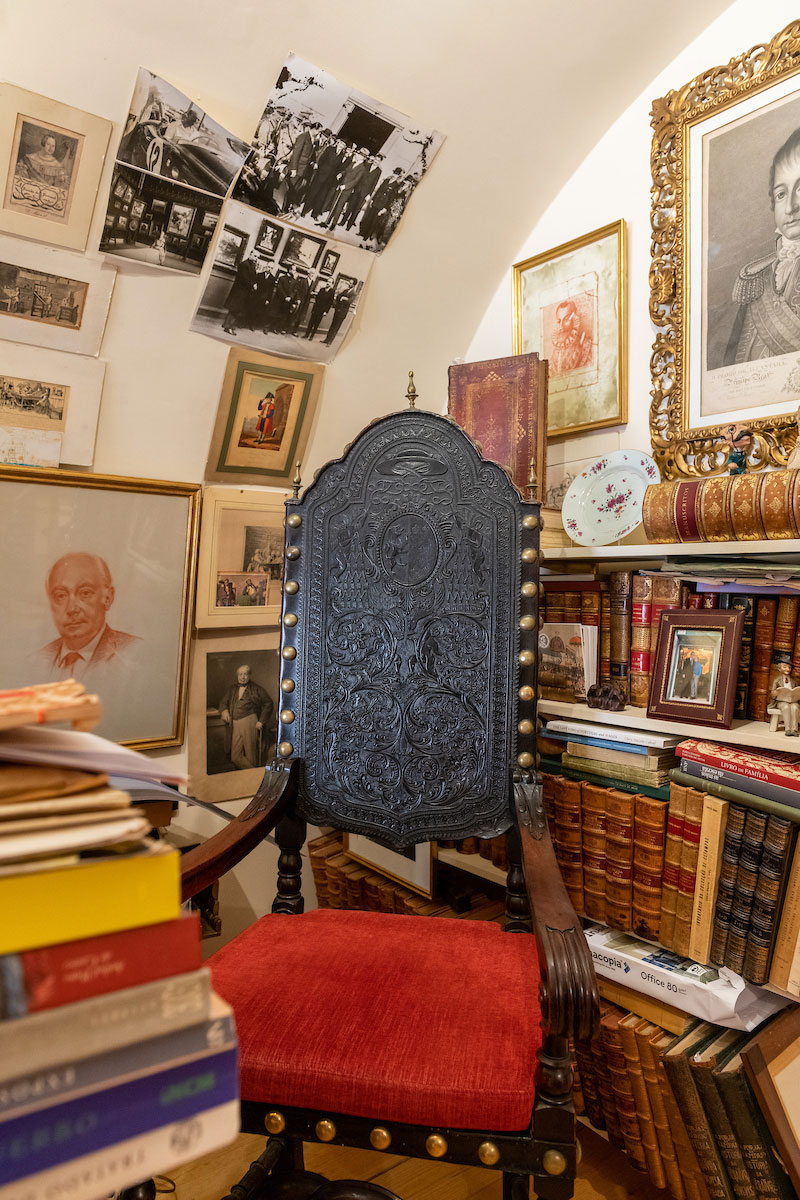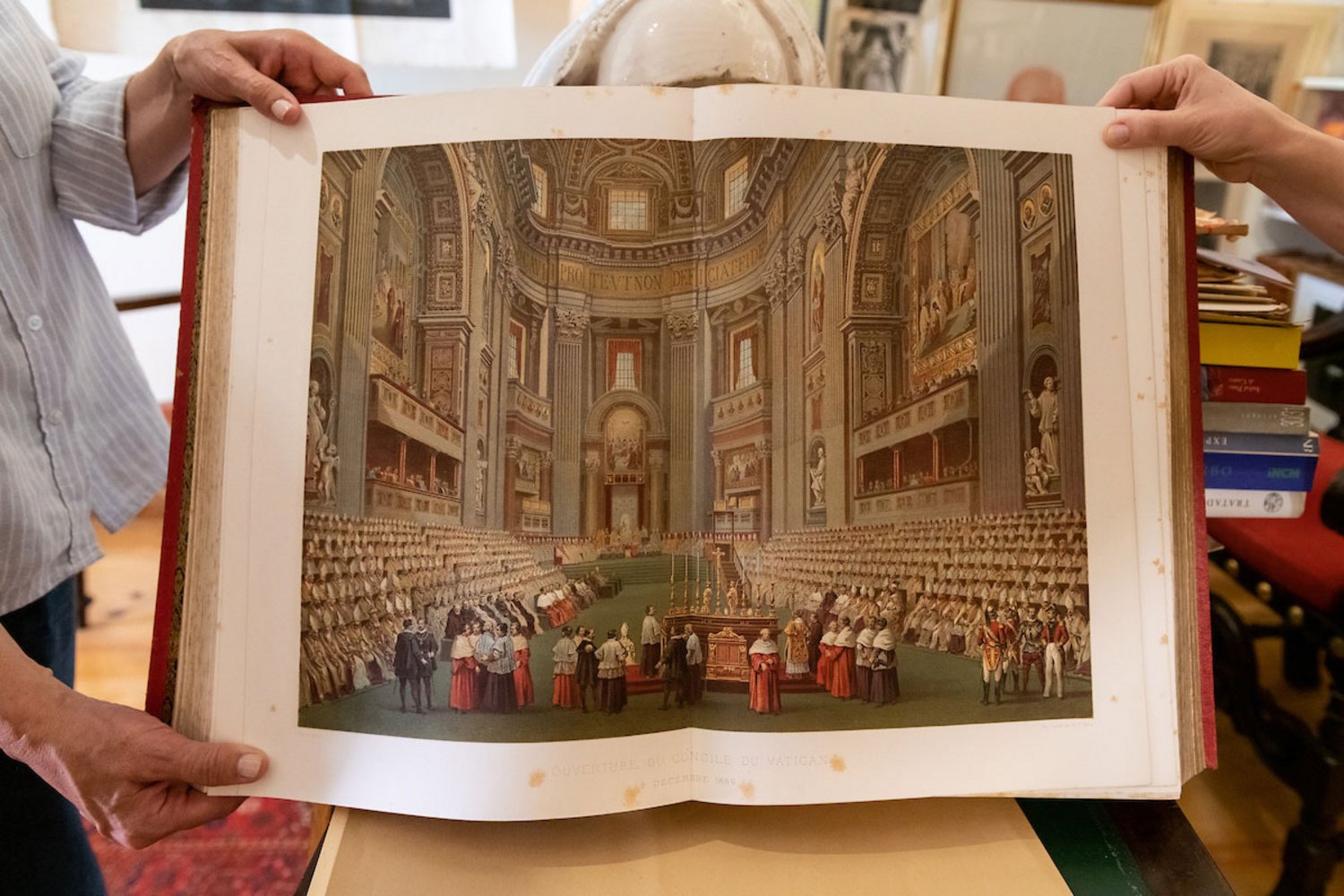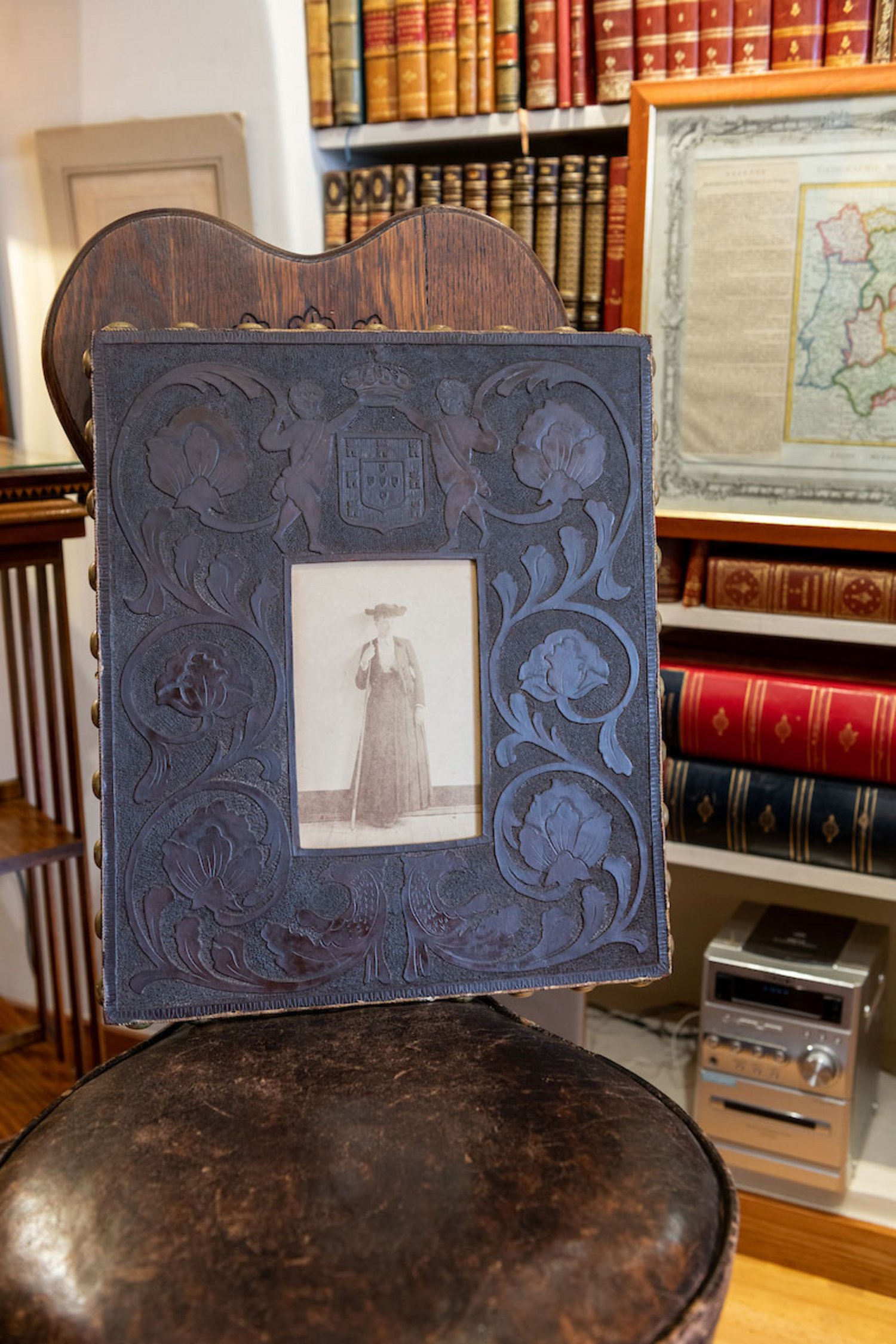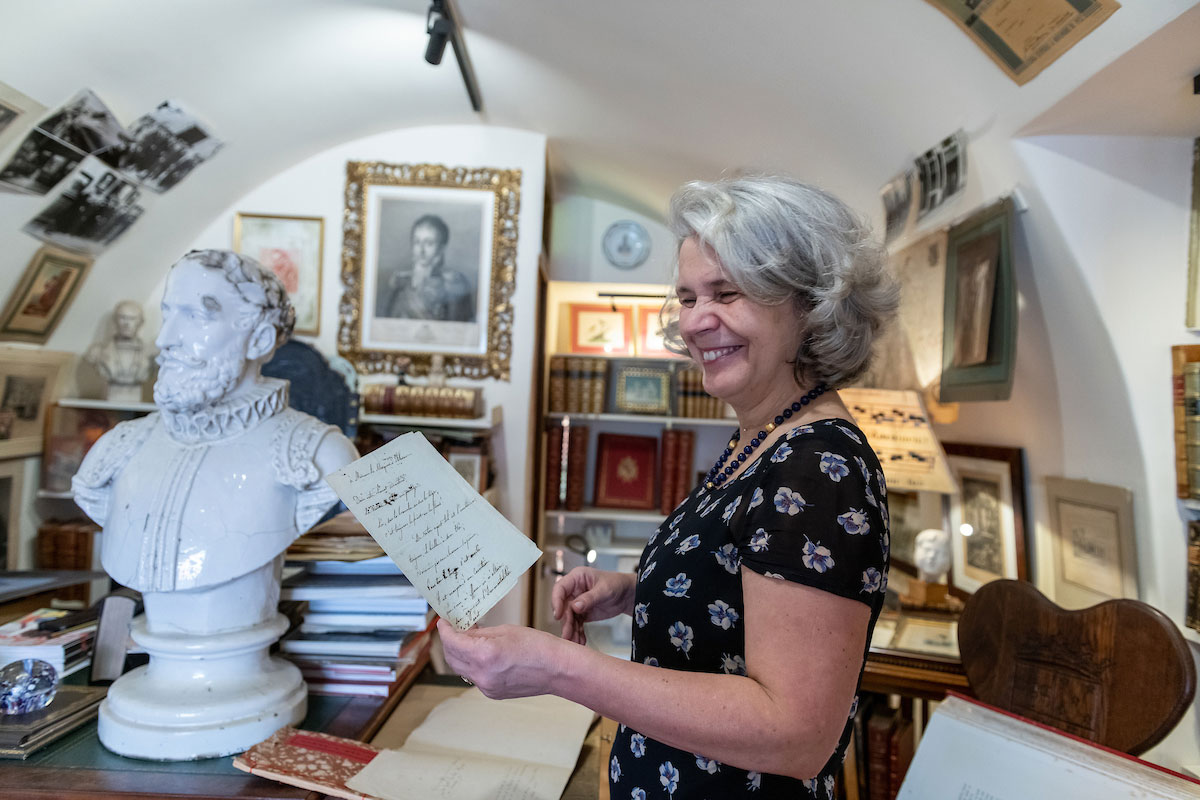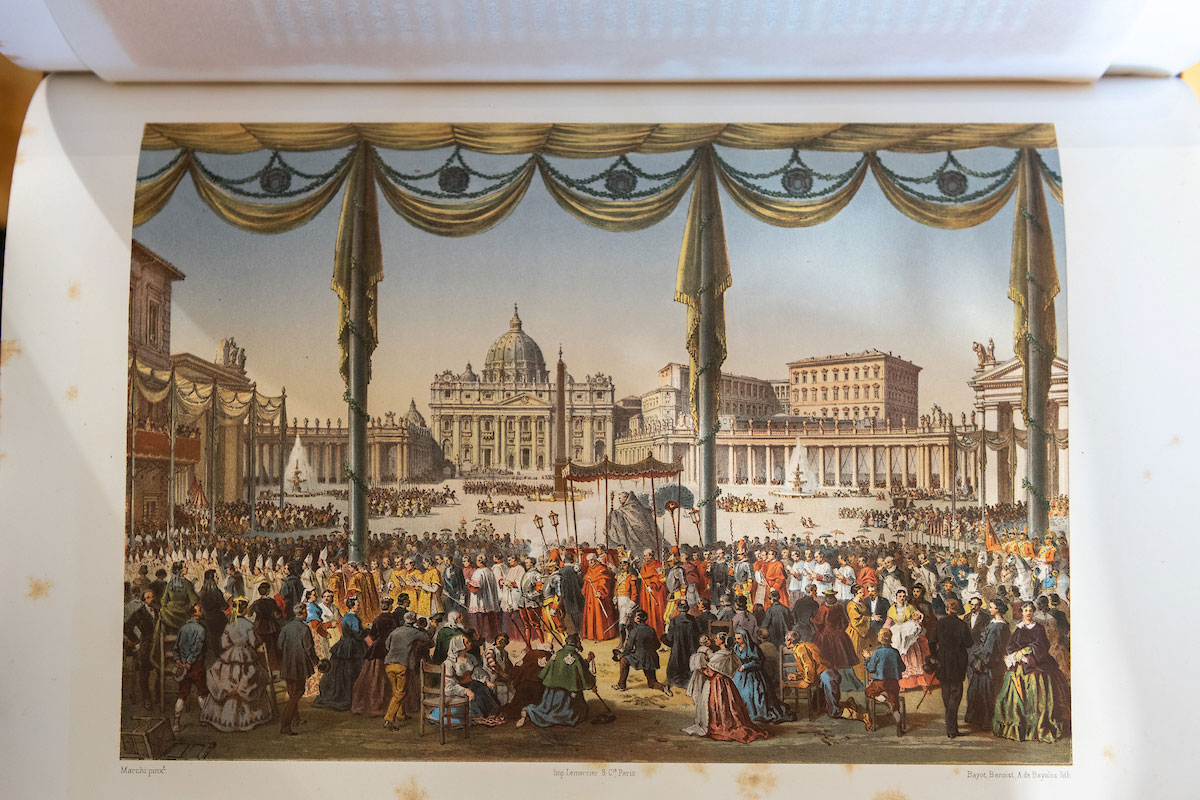"O Manuscrito Histórico", a Shop with History in Chiado
In a vaulted tunnel of the Valadares Palace, on Calçada do Sacramento, in Chiado, you'll find one of the establishments classified in Lisbon as a "Shop with History". It's O Manuscrito Histórico, a store specializing in manuscripts, engravings, drawings and old books, as well as other rarities that Teresa Margarida Rebelo, the founder's daughter, finds at estate sales and auctions.
Antiques, a family tradition
The love of antiques is a family tradition. Teresa's parents have always been talented collectors, and José Rebelo, when he retired, founded this establishment with his son in 1989, shortly after the great Chiado fire. Now it's Teresa, who after a career as a journalist, fell in love with the family business and decided to take the store into her own hands.
Rarities and curiosities for different interests
Despite being small, the space overflows with curiosities. For example, Teresa points out an illustrated bible from the 17th century. One of the illustrations depicts a priest wearing glasses, "which was unusual for the time", says the specialist in printed antiquities (there's no doubt that when the eye is guided by those in the know, objects reveal unforeseen meanings) The price of this bible won't be the most affordable, but just so you know that this store has items for various purses, the owner shows us lithographs from the 19th century that sell for just over twenty euros.
Teresa continues her list, making us turn on ourselves: here, a rare edition of Les Enfants Terribles, by Jean Cocteau; behind us, an engraving of Marshal Wellington, the one who fought against the Napoleonic invasions; over there, a large and expressive English engraving from the late 18th century, depicting a scene from Macbeth, with its demonic characters; next to it, a photograph of what would become Queen Amélia, dressed in country clothes, presumably by Carlos Relvas... And so we could go on, discovering rarities in this "chest".
"Manuscripts are unique documents"
As for the manuscripts, which give the store its name, we ask: many are on reserve elsewhere, because the store can't hold everything; there are several available, particularly by Portuguese writers. And if there aren't any on reserve, Teresa Rebelo will almost certainly be able to find them. Here, too, there are "very diverse prices", she says. Framing a handwritten poem by Natália Correia or an excerpt from Eça de Queirós can be a good idea when it comes to giving a birthday present to friends. After all, a manuscript is a unique, unrepeatable document that brings us closer to the person who wrote it. And one more curiosity: manuscripts are one of the few objects you can't buy online - you can see why.
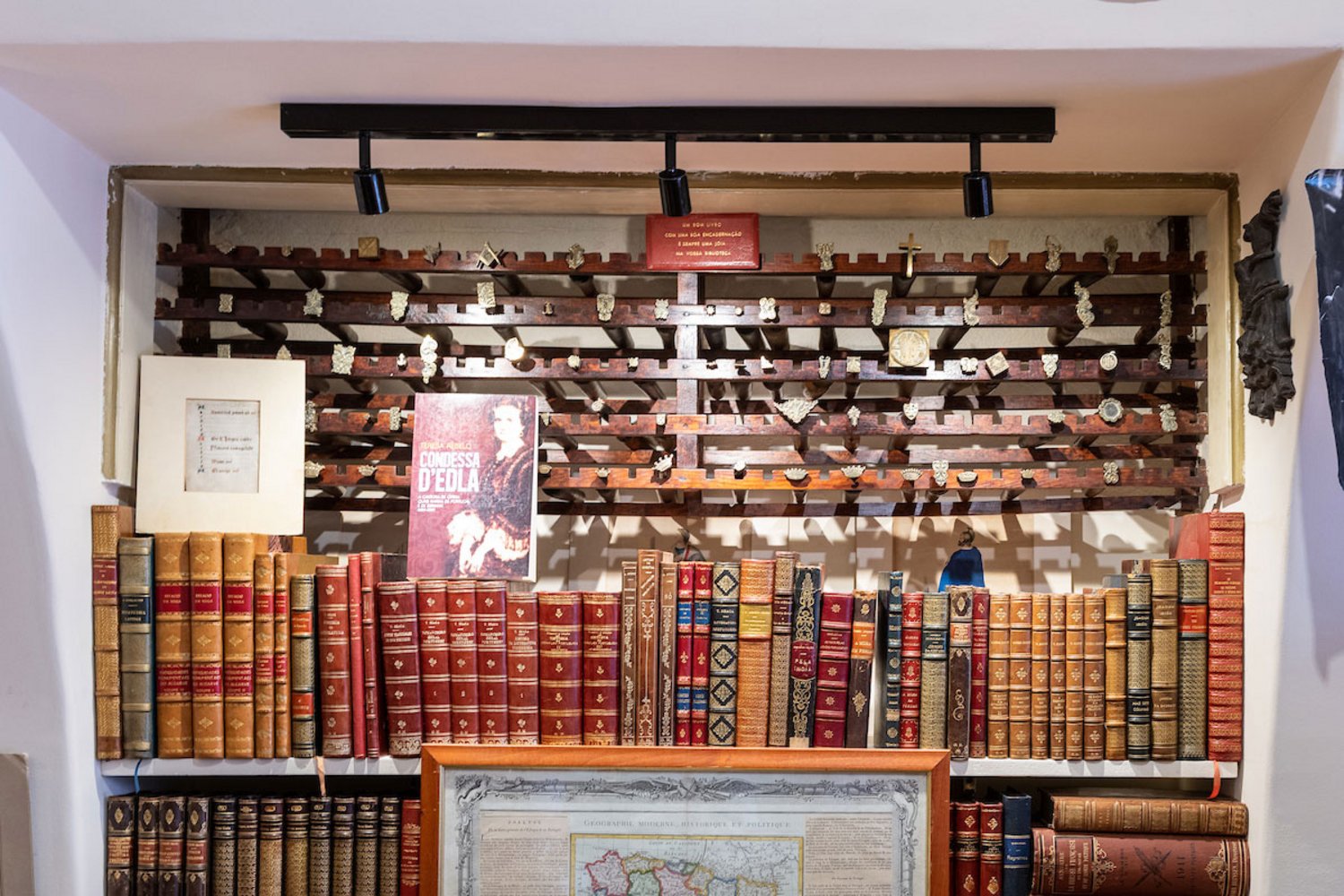
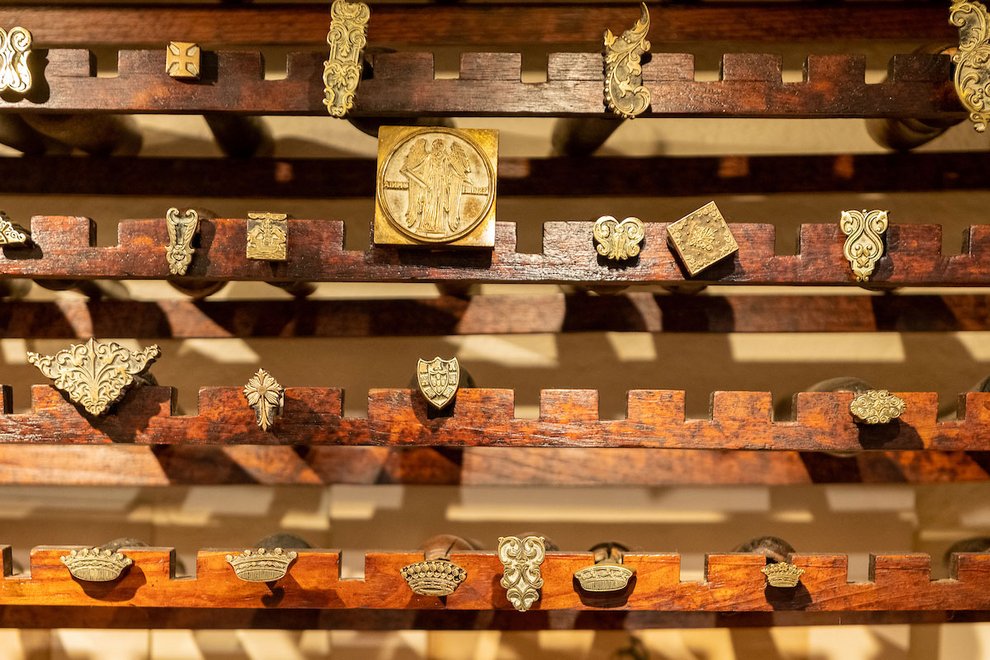
Young customers are on the rise
The time and dedication of the owners have brought specialists and curious people to this space, forming a loyal clientele. There are also tourists who come in and end up taking away a more enlightened reminder of national culture. Young people interested in "Manuscrito" are also growing. And then there's word of mouth, friends of friends who find in The Historical Manuscript a reason to stay tuned. Teresa Rebelo may not have exactly what the customer is looking for in her store, but she knows, as is usual in the antiques business, the right place to look - because her priority, she says, "is to have satisfied customers". One of those satisfied customers may well be President Marcelo Rebelo de Sousa, who knows this Shop with History well.
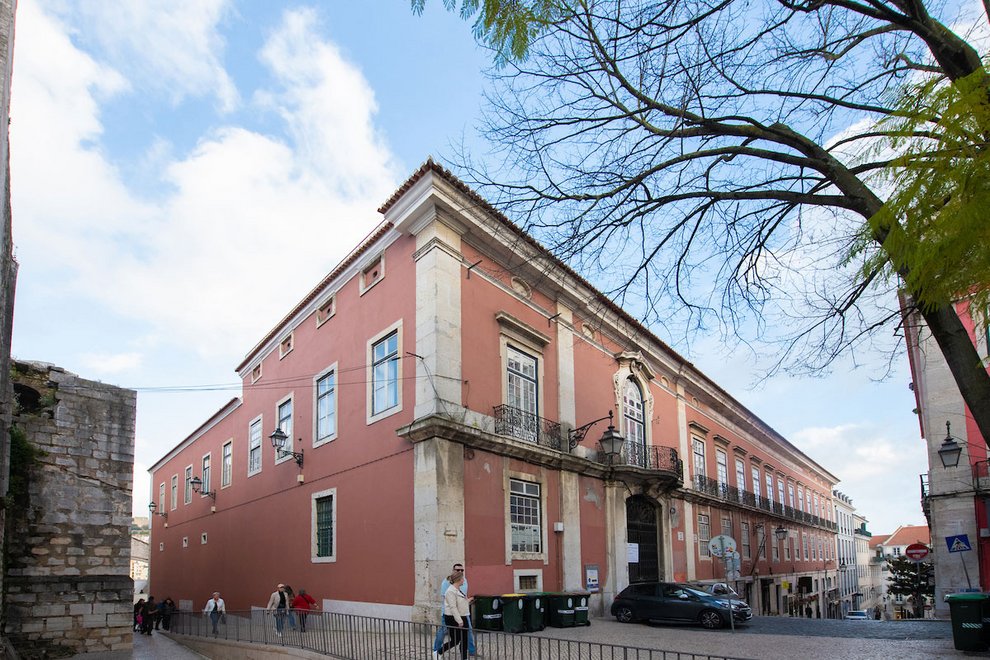
The Valadares Palace
The O Manuscrito Histórico store is located in the Valadares Palace. Located on Calçada do Sacramento, between numbers 34 and 54, this palace is an eighteenth-century example of noble Pombaline architecture.
The palace owes its name to the Valadares family. It is known that in the mid-17th century, the building was owned by Miguel Luís de Meneses, Count of Valadares. The family lived in it permanently until the earthquake of 1755, which did not spare the palace from almost total ruin. After being completely rebuilt, it suffered another setback: a fire in 1798 that consumed all the contents. The work that followed repaired the major damage, keeping the exterior essentially as it had been laid out in 1785. But the Valadares no longer lived there.
Factory, dances and schools
At the end of the 18th century, a wire factory was set up in part of the building and remained there until 1817. In 1819, the building was leased by its owner to a group of club members, the Portuguese Assembly, who adapted part of the building to be used for parties and balls attended by the aristocracy and royalty.
After the Portuguese Assembly moved to other premises, it was the palace's turn to house the Club Lisbonense or Club do Carmo in 1835. Meanwhile, between 1836 and 1850, the first counts of Paraty took up residence in the basement of the palace. Until the mid-19th century, the parties continued with great success, as evidenced by the memoirs of the Marquis of Fronteira, who was one of the directors of the Club Lisbonense.
After this period, part of the space became a girls' school. Other schools followed, including the so-called Colégio Alemão, the Liceu do Carmo, a section of the Liceu Passos Manuel, the Escola Veiga Beirão (1941-1996), and finally the Escola EB 2+3 Fernão Lopes (until 2004). Curiously, this site's connection to education goes back a long way before the palace was built: it was home to the so-called General Study, in other words, the embryo of the University of Lisbon, created by King Dinis in 1290.
As well as schools, other parts of the building once housed the General Directorate of Posts, Telegraphs and Lighthouses (1881-1887) and were rented out for housing.
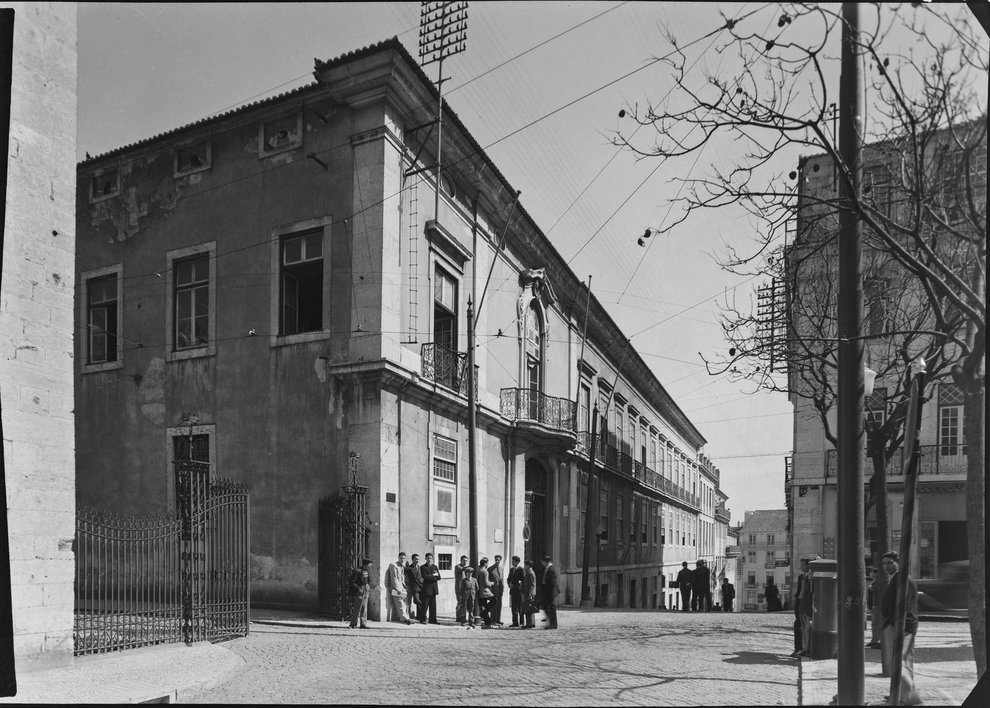
Protected heritage
Today, in addition to the commercial spaces, the palace houses a service station for the parish of Santa Maria Maior (formerly the Sacramento Parish Council). With the exception of the stores, which belong to private individuals, the former residential area on the upper floors is now vacant and owned by the state.
The Valadares Palace is heritage protected by its inclusion in the classification of Pombaline Lisbon, in the Santa Justa Elevator Protection Zone and in the Carmo Convent Church Protection Zone.
Source: monumentos.gov.pt






